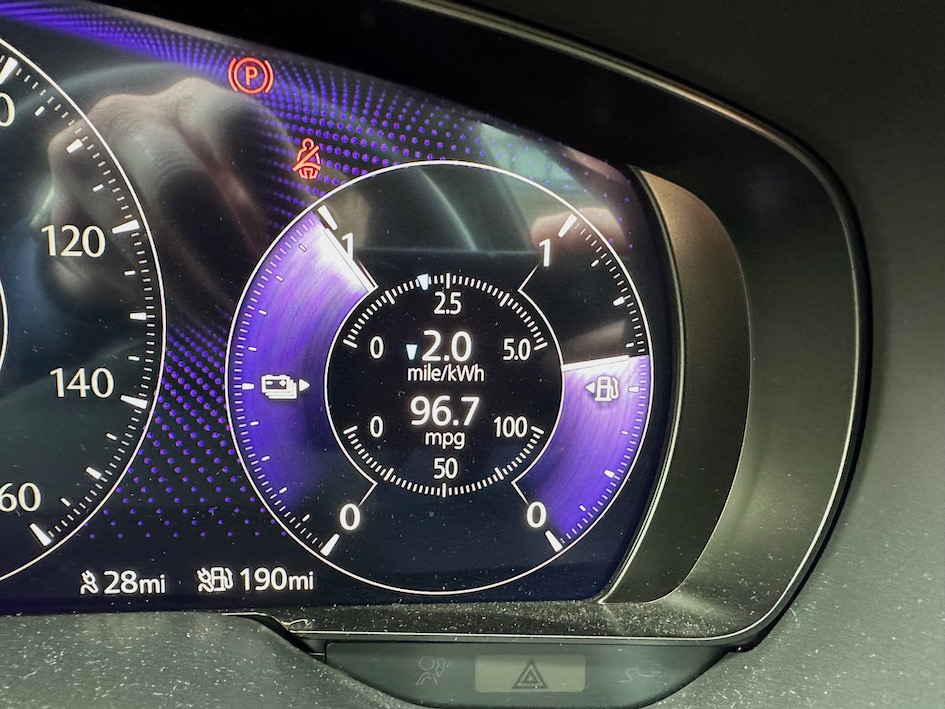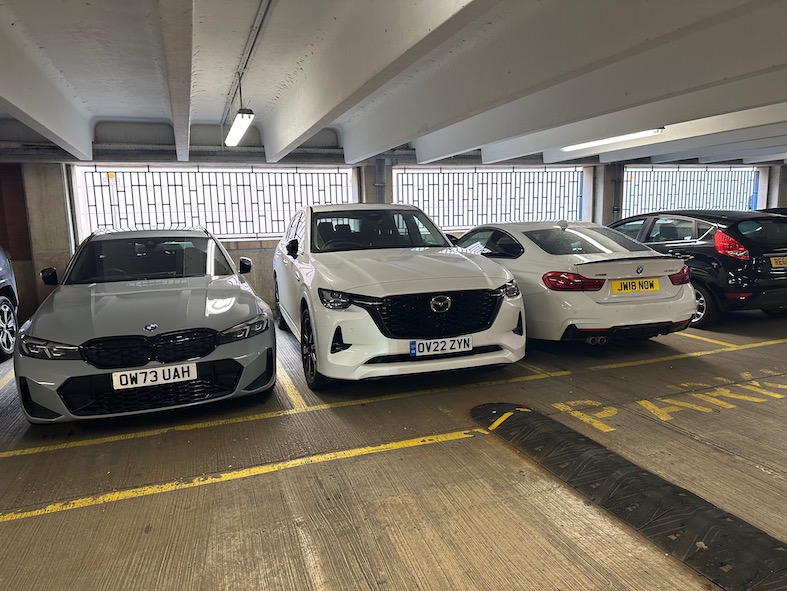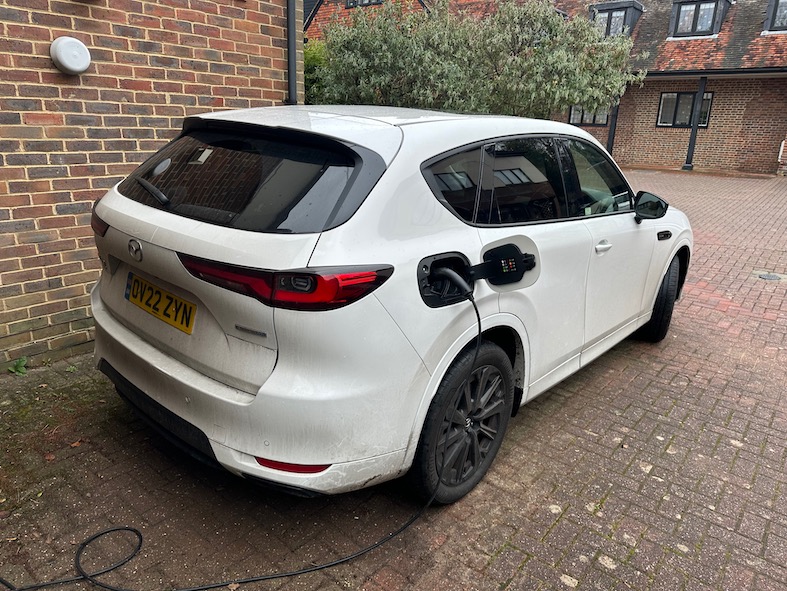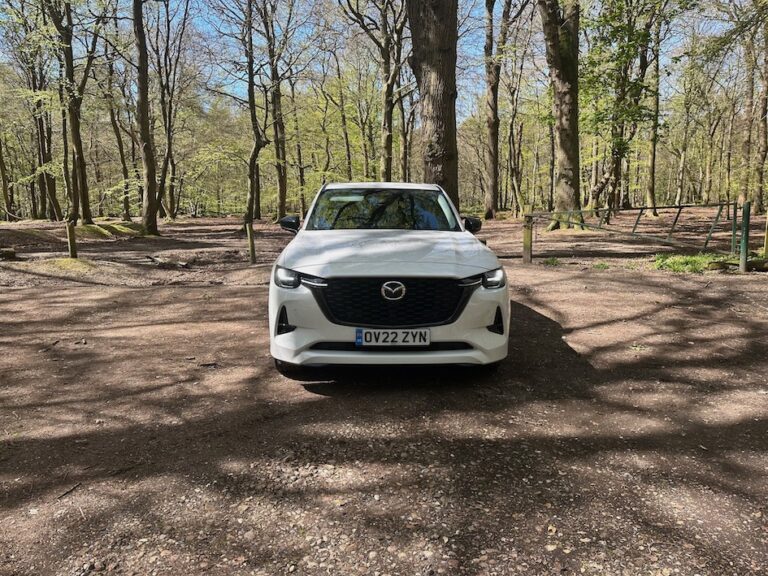REPORT 8

And so, there we have it. My six months with the Mazda CX60 PHEV has come to an end and it’s time to bid it a sad farewell some 4346 miles and, more crucially, 96.7mpg later.
While I risk sounding like a stuck record, I will never stop banging this drum about plug-in hybrids and my time with the CX60 has been the perfect case in point. This is a reasonably-sized SUV with a 2.5-litre petrol engine. If I had spent those 4346 miles pounding the motorways every day, would I have had the same result at the pumps?
Undoubtedly not, but for many including me, that’s unrealistic of my usual journeys – regular commuting easily out-weighing those occasional longer trips. And that’s where judicious and constant charging makes itself felt, as evidenced by the Mazda’s trip computer.
So what else have I liked about running this Mazda. The CX60’s size took some getting used to (it’s deceptively large) and its practicality over and above the likes of the CX5 has been a boon when doing DIY or needed all of its interior space for carrying people.
I really liked its looks too especially the combination of the Rhodium White paintwork allied to the 20in black wheels. Was that the best choice in a winter and spring that’s been wetter than a barracuda’s bikini? Perhaps not, but the white hid the build-up of road grime surprisingly well.
In a decidedly old-school fashion as well, I really got on with the Mazda’s interior. Yes, there’s a touch-screen, but there was also a rotary-control (which I preferred to use) and there were real buttons throughout the cabin (remember those?). It was a testament to when car controls didn’t require you to take your eyes off the road for long periods of time while you prodded your way through various menus.
There was one small issue with a couple of recalls, but the local Mazda dealer in nearby Littlewick Green, collected the car and dropped it back, with no fuss and kindly valeted it in the process too. It may have been out of action for a day, but it was a day when I was working from home anyway, so no harm done.
So what did we not like? In fairness, there wasn’t much. I mentioned the CX60’s size earlier. While it doesn’t offer seven-seater practicality (unlike the forthcoming CX80), it never stops feeling like a big car – and an especially wide one too. That’s really noticeable in older car parks where the spaces are tighter than usual.
Also, in the last month or so, the car started developing a slight creak from its rear suspension, like a staircase in a haunted Scooby Doo house. Other than that, a slightly sticking rear door handle easily solved with a squirt of WD40, it has been largely faultless.
Would my opinion of the CX60 be different, had I been doing more motorway miles and therefore not seen such impressive fuel economy? Perhaps. But all of us can only speak of our own experiences and for me, the numbers don’t lie. 96.7mpg. Incredible.
REPORT 7

Last time I went into detail about the costs of running the Mazda CX60 PHEV, especially when it came to the costs of charging the 17.8kWh battery. As the end of our time with the Mazda starts to near, I wanted to touch on journeys and, more precisely, the types of journey that I’ve been taking.
This came to mind especially over Easter, where a short family break meant four days, around 200 miles and no chance of charging after I left home – thanks in large part to some defunct chargers at the hotel where we were staying. For the Mazda with its rough 30-mile EV range, this was obviously far from ideal – and saw our average mpg over the 4100 miles that we’ve driven the CX60 drop considerably to around 86mpg.
No real surprise in that of course, but what I was surprised about, was just how fast the average then started to recover when I had a chance to charge the battery again and return to my normal journey habits. And then the thought occurred to me. My usual station commute, three times a week, is a 20 mile round trip and can be easily done in EV mode – even in the winter.
However, while those occasional longer journeys – including my Offa’s Dyke trips which are about to resume – do hurt my average fuel economy, the regularity of my usual sole-EV routine is easily enough to dilute those irregular longer journeys. Hence the fact that my average has now bumped back up to 95.2mpg and is a perfect example of why regular charging always pays off for an EV.
On a recent Mazda event, my fuel economy raised a few eyebrows when questioned, but the trip computer, the odometer and my wallet all prove that PHEVs [start itals] can [end itals] work and [start itals] can [end itals] be economical if used in the right way. Are they great on those longer journeys? Generally speaking, no. But if you’re also doing lots of shorter journeys in-between, the dilution effect could be greater than you might at first imagine.
REPORT 6

In my last report I promised that I’d talk about costs, but first the Mazda CX60 PHEV has been back to my local dealer for some recall work.
The first recall that it was actually booked in for, was a recall on the steering rack to reapply grease to the steering rack gear teeth and replace the worm gear spring, but on booking it in, I was told that two other programme updates were required. The three together meant it would be with the garage for a full day.
Although a courtesy car wasn’t available, thankfully they would collect and return the CX60 free of charge. Even better, they even cleaned it inside and out, which was welcome recompense for the inconvenience. And no, before you ask, they didn’t know it was a press car, but it was a good example of how a small negative can be turned into a positive.
So, let’s tackle those costs. Although I’ve been doing a lot of shorter journeys and not many longer ones, the fact remains that my average fuel economy is still at 96.8mpg over the 3300mls that I’ve driven the car so far. Would that be as high if there were more longer journeys and less shorter ones? Probably not, but again that comes down to the type of driving you do and how you use your car and I’d like to think that my type of journey habits aren’t than uncommon.
With the warmer weather of spring, my fully charged mileage of the 17.8kWh battery has begun to rise as well to around 31-33 miles. Those early winter mornings seeing 22-25 miles are thankfully long gone.
Being conservative, let’s estimate that I might get 30 miles as an average from a full charge. On the new 24.5p/kWh standard variable tariff for electricity arriving on 1st April that equates to £4.36 for a charge from 0 to 100%. At the time of writing that’s the equivalent of roughly two-thirds the cost of a gallon of unleaded, so you would have to be doing 45mpg on the petrol engine – at least – to have parity. For a car the size and weight of the Mazda, frankly that’s never going to happen.
Where things get interesting however, is if you’re on one of the off-peak electricity tariffs available on the market. For running a PHEV you’d need to do your maths to work out if it was worth it, but on Octopus Go at 9p/kWh that same full charge for the CX60 will cost you just £1.60. Going back to our previous calculation, that amount would buy you just a quarter of a gallon. That means the petrol engine would need to be doing 120mpg to get parity.
So while how you drive your PHEV is important, one thing is for sure, even on the standard electricity tariff, those electric miles will always be cheaper than running on petrol.

